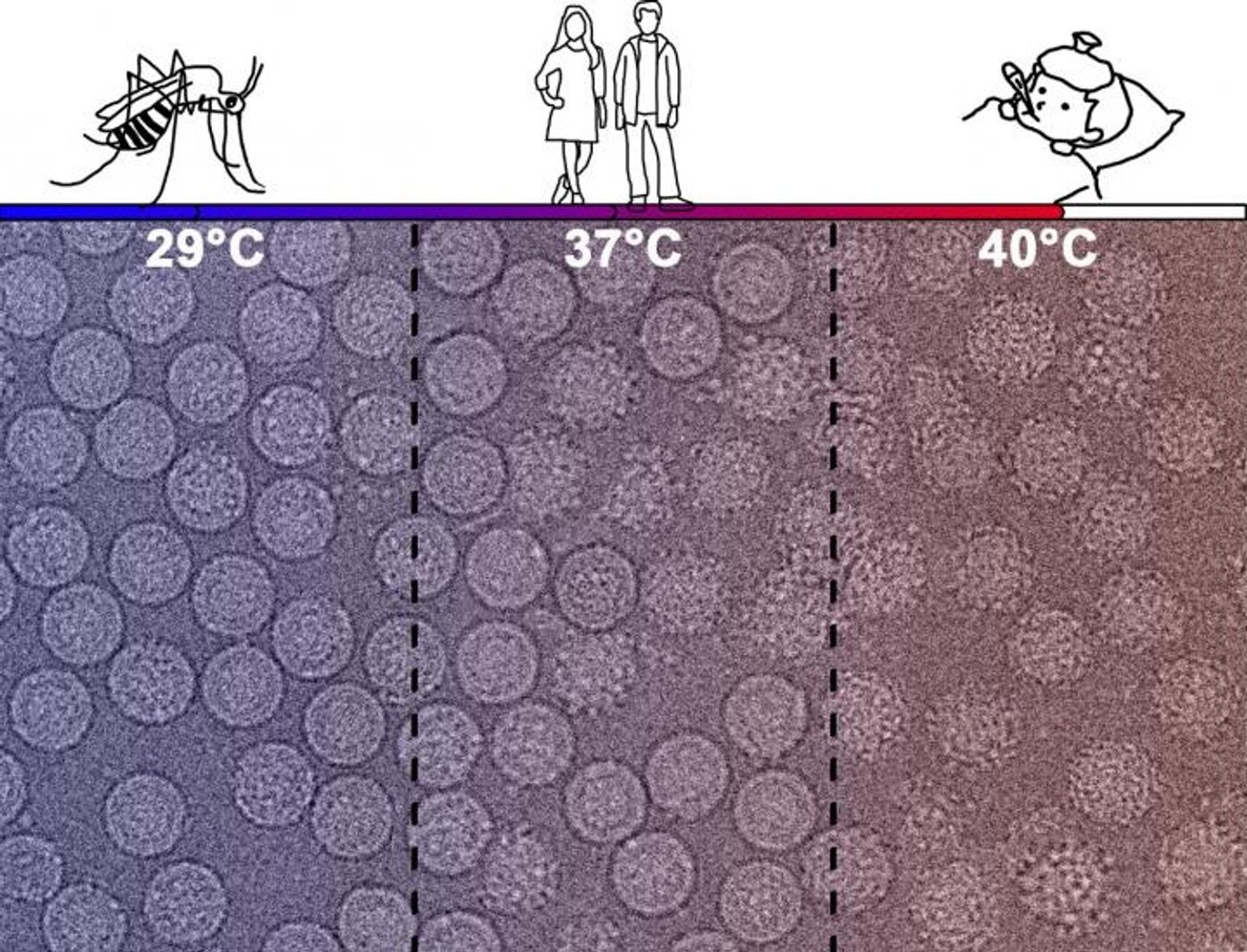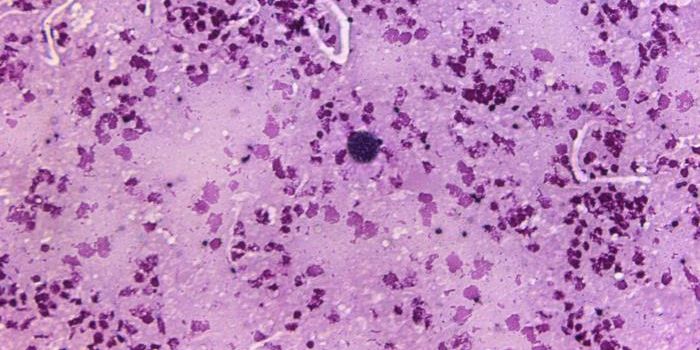Dengue Virus Changes According to the Temperature
Four related versions (or serotypes) of dengue virus are common in at least 100 countries, threaten around three billion people, and cause about 400 million infections every year, which may be mild or severe enough to cause deadly hemorrhagic fever and dengue shock syndrome.
Reporting in PLOS Pathogens, researchers have now learned more about dengue virus serotype 2, DENV2, which is transmitted by mosquitoes and exists as a spherical particle that’s smooth at the mosquito body temperature (29 degrees Celsius) and becomes bumpy at human body temperature (37 degrees Celsius). Scientists want to know more about this change because it can help the virus evade detection by the human immune system.
"Together with Professor Pei-Yong Shi from UTMB, we found that in laboratory-developed DENV2 strains, mutations in the virus' E protein causes its transformation into bumpy particles. These structural changes can cause vaccines and therapeutics to be ineffective against the virus," explained the lead author of the study Xin-Ni Lim of Duke-NUS' Emerging Infectious Diseases (EID) Program.
In this work, the researchers also obtained samples of DENV2 from infected patients. They found that unlike the dengue viruses used in the laboratory, those from patients remained smooth at 37 degrees Celsius. At a fever temperature of 40 degrees, however, the bumpy surface emerged.
"Our study gives a new direction to vaccine development and treatment for dengue disease. For prevention of disease through vaccines that are administered to the patient before dengue infection, we should use those that are effective against the smooth surface virus. When it comes to patients displaying fever symptoms, treatment strategies effective against the bumpy surface particles should be implemented," noted the corresponding author of the report Dr. Sheemei Lok, a Professor at Duke-NUS' EID.
"This study is a first step towards gaining more insight into how DENV2 reacts and adapts to the host's immunological defenses. We were also able to use computational modeling approaches to predict why particles from different DENV2 strains are more or less adept at morphing from the smooth to bumpy structures. By better understanding the interactions between the virus and the host, we will be able to develop better therapies and vaccines to treat or prevent infections, and contribute to public health outcomes," added Dr. Peter Bond, Principal Investigator from A*STAR's BII.
This research indicates that DENV2 used in laboratory studies may be too dissimilar from the one found infecting people to be a good model. The scientists plan to investigate other serotypes of dengue virus to look for other changes.
Sources: AAAS/Eurekalert! via Duke-NUS Medical School, PLOS Pathogens










